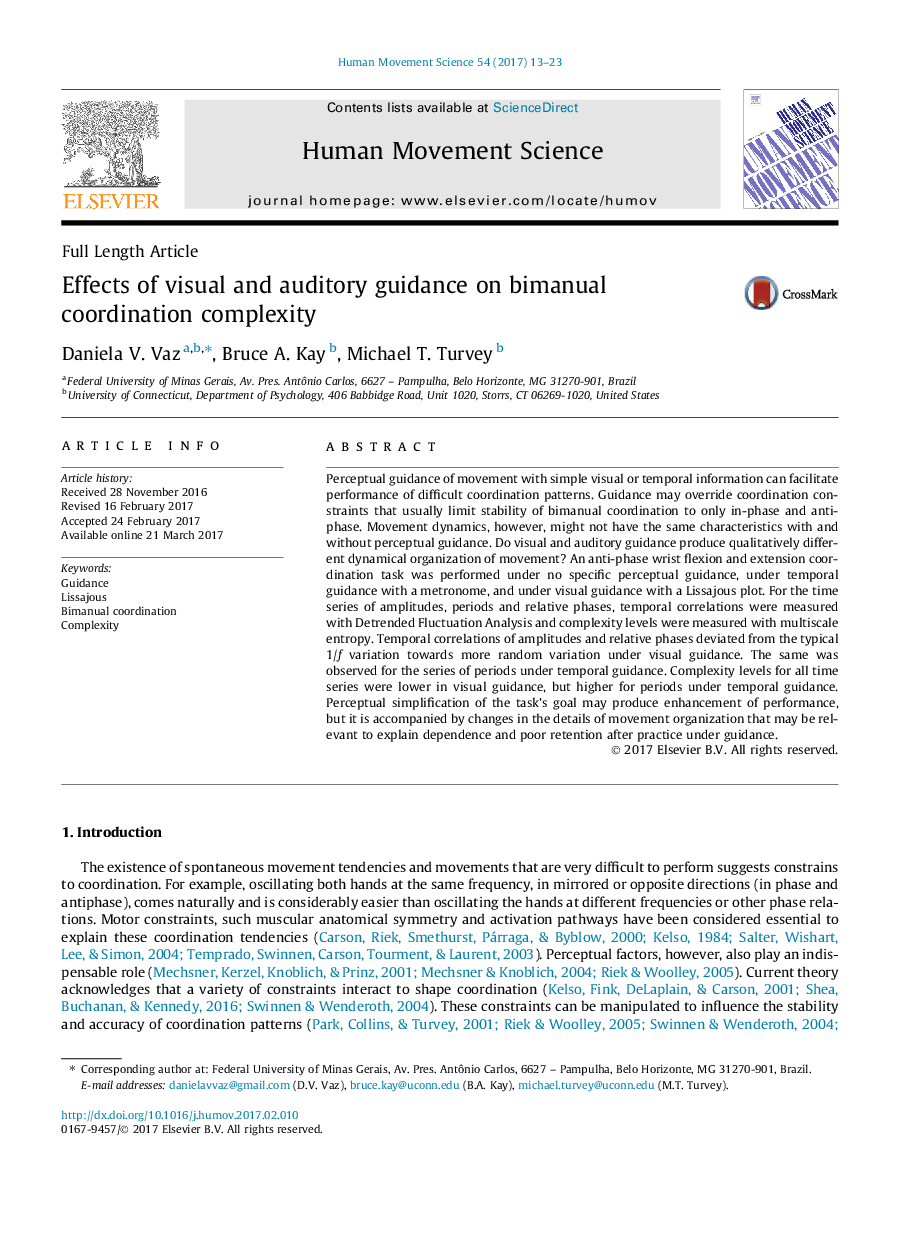| Article ID | Journal | Published Year | Pages | File Type |
|---|---|---|---|---|
| 5041962 | Human Movement Science | 2017 | 11 Pages |
â¢Visual guidance can reduce complexity of bimanual coordination.â¢Complexity and temporal correlation measures capture distinct aspects of coordination.â¢There may be a relation between low complexity in guided practice and poor retention.
Perceptual guidance of movement with simple visual or temporal information can facilitate performance of difficult coordination patterns. Guidance may override coordination constraints that usually limit stability of bimanual coordination to only in-phase and anti-phase. Movement dynamics, however, might not have the same characteristics with and without perceptual guidance. Do visual and auditory guidance produce qualitatively different dynamical organization of movement? An anti-phase wrist flexion and extension coordination task was performed under no specific perceptual guidance, under temporal guidance with a metronome, and under visual guidance with a Lissajous plot. For the time series of amplitudes, periods and relative phases, temporal correlations were measured with Detrended Fluctuation Analysis and complexity levels were measured with multiscale entropy. Temporal correlations of amplitudes and relative phases deviated from the typical 1/f variation towards more random variation under visual guidance. The same was observed for the series of periods under temporal guidance. Complexity levels for all time series were lower in visual guidance, but higher for periods under temporal guidance. Perceptual simplification of the task's goal may produce enhancement of performance, but it is accompanied by changes in the details of movement organization that may be relevant to explain dependence and poor retention after practice under guidance.
